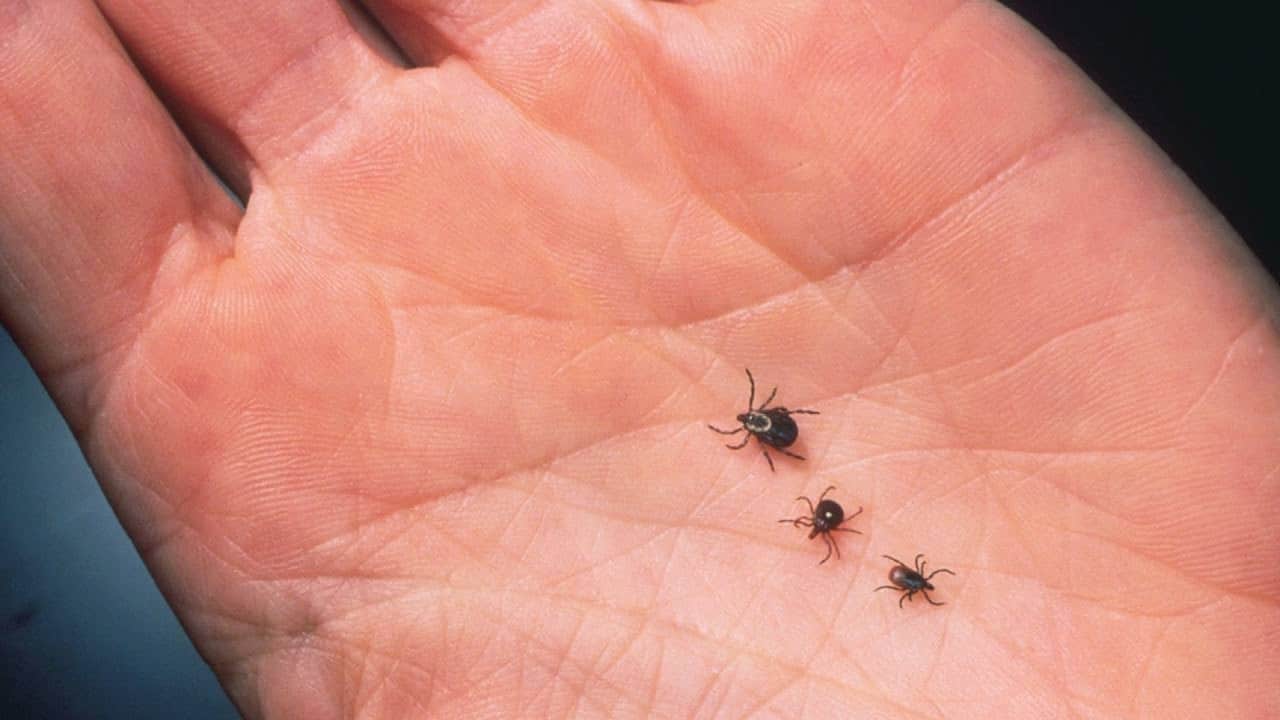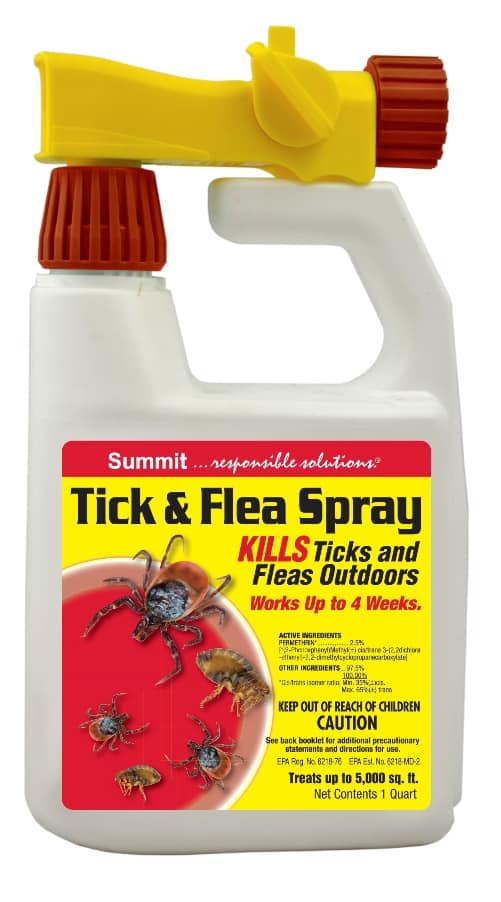
The question is how to get rid of ticks. But you could call it a tick-ing time bomb.
In backyards, forests and fields across America, the population of disease-carrying ticks is increasing. Homeowners and homesteaders alike are wondering how to get rid of ticks on their properties. If that wasn’t bad enough, a new species of tick not normally found in the Western Hemisphere has now invaded the United States.
As a result, many health and insect control experts are predicting this summer to be another bad season for ticks and their disease-carrying bites.
How to Get Rid of Ticks: Lyme Disease
Ticks are best known for transmitting Lyme Disease, which can cause a rash, fatigue, fever, chills, and headaches. Lyme Disease can also cause aches in muscles and joints. If left untreated, Lyme Disease can cause arthritis, severe joint pain and swelling. So it’s no wonder that summer outdoor activities make us think about how to get rid of ticks and control tick populations.
Every year, about 30,000 cases of Lyme Disease are reported to the Centers for Disease control and Prevention (CDC), the leading national public health institute in the United States. Lyme Disease is transmitted by the bites of infected Blacklegged Ticks (also known as Deer Ticks.) Unfortunately, the Blacklegged Tick is widespread throughout the Eastern US—particularly in the Northeast and the Upper Midwest.
But Lyme Disease isn’t the only disease spread by ticks. The American Dog Tick, found east of the Rocky Mountains and in parts of coastal California, transmits Rocky Mountain spotted fever. The Brown Dog Tick, found throughout the continental US, also spreads Rocky Mountain spotted fever.
The Western Blacklegged Tick, found in Pacific Coast states, can transmit Lyme Disease and Anaplasmosis. The Lone Star Tick—found in Eastern Texas, throughout the South and as far north as Illinois, Ohio, Pennsylvania, southern New York and Massachusetts—carries several diseases.
As if that wasn’t enough, the Asian Longhorned Tick was reported for the first time in the United States in 2017. Since then, the ticks have been found on pets, livestock, wildlife and people.
Hey, check this out:
Click here to see what’s on sale!
How to Get Rid of Ticks: Prevention is the Key
In backyards and acreage property where people live and work, prevention is the key to keeping tick populations down.
Ticks thrive in high-humidity areas in a landscape, and they are less likely to be present in sunny and dry areas. Ticks cannot fly or jump, but they often climb to the tips of tall grasses, weeds, and shrubs to wait for an animal or human to come by. When that happens, ticks can climb aboard the unsuspecting person or animal.

To keep ticks away from houses, clear brush and tall grass, and remove leaf litter where ticks can hide. A barrier of wood chips or gravel between wooded areas and landscaped yards will make it more difficult for ticks to migrate into yards. Try to locate swing sets and playground areas away from wooded areas.
Deer can bring ticks into a yard, so protect vegetable gardens with a deer-proof fence. If possible, remove other plants that attract deer. Instead, plant deer-resistant shrubs and other plants–and Use These Deer Repellents.
Use Insect Spray to Kill Ticks
Ticks can be killed with a permethrin spray such as Summit® Tick & Flea Spray. Permethrin spray is a superior product for tick control. It provides a quick kill of existing tick populations and continues to kill and repel ticks for up to four weeks.
Spray Summit® Tick & Flea Spray around the perimeter of lawn areas, under porches, and in grassy or bushy areas near the house. Ivy and shrubbery up to a height of 2-3 feet should also be sprayed.
Ticks are attracted to dogs, so spray the areas in the yard where dogs travel or spend time. Kennels and dog houses should also be thoroughly sprayed. NOTE: Permethrin is highly toxic to cats. If you have cats, it’s best to not spray your yard with permethrin.
Summit® Tick & Flea Spray is available in a handy hose-end spray bottle and as a concentrate that can be mixed with water and applied with a pump sprayer. A half-gallon bottle of concentrate makes 50 gallons of ready-to-use spray.
Summit® Tick & Flea Spray is available at Tractor Supply and select local hardware stores and garden centers. It is also available online at www.summitresponsiblesolutions.com and Amazon.
The Life Cycle of a Tick
Want to get rid of ticks and kill tick populations? It’s important to know about the life cycle of ticks.
Ticks go through four distinct stages during their two-year life span. Here are the four stages:
- A tick begins its life as an egg.
- The tick egg hatches into a larva, which is sometimes called a seed tick. The larva attaches itself to a host animal, from which it takes a blood meal.
- The tick larva becomes a nymph. The nymph attaches itself to another host animal and takes another blood meal.
- The nymph becomes an adult tick. An adult female tick takes a blood meal from a third animal host. It then becomes engorged and falls off the host. A female tick can lay about 3,000 eggs in a protected area on the ground.

How to Get Rid of Ticks and Other Insects
We’ve covered the basics of how to get ride of tick. But summer brings plenty of insect pests– not just ticks and fleas. For tips on natural ways to kill mosquitoes, aphids, spider mites and other insect pests, read Natural Insect Control Uses Mother Nature.






I’ve been thinking about doing something about the ticks in my yard for some time now. As you said here, it would be best to take preventative measures to get rid of the ticks. I’ll probably have to get someone to come and do a pest control service for me as I think that would work best.
Do ticks survive prolonged freezing temperatures such as those in the North East U.S. and Quebec?
Bryan–
Yes, ticks can survive freezing temperatures. When temperatures drop below freezing, they find shelter from the cold in leaf litter and debris in the wooded and grassy areas they inhabit. Snow cover also helps insulate ticks. Ticks can also survive freezing temperatures if they are attached to a host animal. The heat from the host helps them survive the cold.
Yes. They survive. We had temps of -10°F without snow cover and I see no impact on tick populations.
Sadly, I live on Long Island. All winter season I have been removing ticks crawling on my little dog. Thank God he is white and I spot them easily. Also, we had the first case of the Powassan virus on Long Island in 2020, a deadly tick-borne illness, in our community. The tick can infect someone within 15 minutes of the bite. Please take major precaution all year round.
Tick-borne illnesses, in my opinion, have reached epidemic levels. So many people I know suffer terribly. The cases are increasing at a rapid speed. That is only if they are diagnosed. and reported. One Infectious Disease Doctor told me that even in this day and age, many of his colleagues ignore the symptoms because they can fall into many different illness categories. So, in his opinion, many leave the hospitals either undiagnosed or misdiagnosed.
Some advise that you wear light-colored clothing when outdoors/hiking. Is that because ticks are not attracted to light colors, or just to see them better?
Barry– Actually, the answer is both. Ticks are not as attracted to light-colored clothing. But it is also easier to spot them on lighter clothing.
Is the above mentioned insecticide safe for bees?
No. Permethrin (like most other outdoor insecticides) is toxic to bees exposed to direct treatment or residues on blooming crops or weeds. Do not apply this product or allow it to drift to blooming crops or blooming weeds if bees are visiting the treatment area.
Is there an alternative to use that is more safe?
Grace–
A friend of ours has backyard chickens, and she says her flock LOVES to eat ticks.
Randy
Just wondering how safe this product is for domestic animals? I had someone tell me it is particully dangerous for cats is this true?
Sandie:
Cats are more sensitive to permethrin than other mammals, but cat lovers can still use the insecticide as long they’re careful about it, veterinarians say. Here’s what NPR posted on the topic:
“It’s the dose that makes the poison,” says Dr. Charlotte Means, director of toxicology at the ASPCA Animal Poison Control Center.
The biggest problem for cats is when they are exposed to highly concentrated permethrin products meant for use in dogs, she says. These products may be 45 percent permethrin or higher.
“Some cats will be so sensitive that even just casual contact with a dog that’s been treated will be enough to cause clinical signs, including tremors, seizures and in the worst-case scenario — death,” she says.
But the concentration of permethrin in household sprays is much, much lower – typically less than 1 percent. And with concentrations of 5 percent or less, Means says, there are rarely problems.
NOTE: Summit Tick & Flea Spray contains a 2.5% concentration of permethrin.
Diatomaceous Earth will dehydrate ticks and fleas on your animals. It’s the bug killer you can eat!!!!
We use to have guinea hens. They took care of the ticks and most any other troublesome insect on the property and usually left the plants alone.
They are bug eating machines, although they do tend to be noisy when someone new stops in.
Raise chickens, or guinea fowl, or such. They eat ticks as well as other insects. Chickens do a great job getting rid of ticks, as long as they are free roaming. Just make sure they (the chickens) have some hide outs in case predators come around– in addition to their coop for night time safety.
Possums are also tick eating machines!